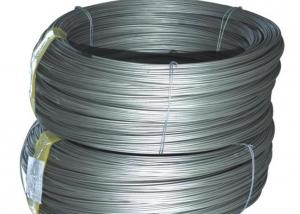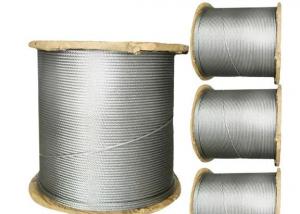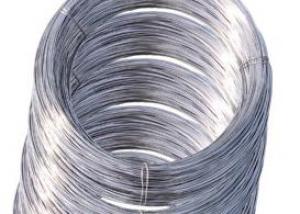wire mesh stainless steel in heavy duty
- Loading Port:
- Qingdao
- Payment Terms:
- TT OR LC
- Min Order Qty:
- 10 m.t.
- Supply Capability:
- 1000 m.t./month
OKorder Service Pledge
OKorder Financial Service
You Might Also Like
heavy duty wire mesh stainless steel
Chemical composition of stainless steel wire:
AISI Grade | Chemical Composition(%) | |||||||
| C | Si | Mn | P | S | Ni | Cr | Mo | |
| 304 | ≤0.08 | ≤1.00 | ≤2.00 | ≤0.045 | ≤0.030 | 8.00~10.50 | 18.00~20.00 | - |
| 304H | >0.08 | ≤1.00 | ≤2.00 | ≤0.045 | ≤0.030 | 8.00~10.50 | 18.00~20.00 | - |
| 304L | ≤0.030 | ≤1.00 | ≤2.00 | ≤0.045 | ≤0.030 | 9.00~13.50 | 18.00~20.00 | - |
| 316 | ≤0.045 | ≤1.00 | ≤2.00 | ≤0.045 | ≤0.030 | 10.00~14.00 | 10.00~18.00 | 2.00~3.00 |
| 316L | ≤0.030 | ≤1.00 | ≤2.00 | ≤0.045 | ≤0.030 | 12.00~15.00 | 16.00~18.00 | 2.00~3.00 |
| 430 | ≤0.12 | ≤0.75 | ≤1.00 | ≤0.040 | ≤0.030 | ≤0.60 | 16.00~18.00 | - |
| 430A | ≤0.06 | ≤0.50 | ≤0.50 | ≤0.030 | ≤0.50 | ≤0.25 | 14.00~17.00 | - |
Stainless Steel Hard Wire
Use: steel rope , steel brush, spring , stapler, etc.
Size: from 0.05mm to 5mm
Soft stianless steel wire
Use: Knitted wire mesh, weaving wire mesh, filtration mesh, high pressure pipe
Size: from 0.07mm -0.60mm
| Standard: | AISI,ASTM,DIN,EN,GB,JIS |
Deviation (mm) | Standard | |
Tolerance (mm) | Max.Deviation (mm) | |
0.32-0.45 | ±0.006 | ±0.006 |
0.50-0.75 | ±0.006 | ±0.006 |
0.80-0.95 | ±0.008 | ±0.008 |
1.00-1.25 | ±0.010 | ±0.010 |
1.30-1.50 | ±0.010 | ±0.010 |
1.60-1.80 | ±0.015 | ±0.015 |
2.0-2.5 | ±0.015 | ±0.015 |
3.0-4.0 | ±0.015 | ±0.015 |
- Q:Can stainless steel wire be used for springs in the mining industry?
- Yes, stainless steel wire can be used for springs in the mining industry. Stainless steel is known for its high strength, corrosion resistance, and durability, making it an ideal material for applications in harsh and demanding environments such as mining operations. Springs made from stainless steel wire can withstand heavy loads, high temperatures, and exposure to water, chemicals, and abrasive materials commonly found in mining operations. Additionally, stainless steel is non-magnetic, which can be advantageous in certain mining applications. Therefore, stainless steel wire springs are commonly used in various mining equipment and machinery, including crushers, screens, conveyors, and drilling equipment, to provide reliable and long-lasting performance.
- Q:What are the different types of stainless steel wire constructions?
- There exist various stainless steel wire constructions, each possessing distinct characteristics and applications. Below are some of the most frequently encountered types: 1. Plain Weave: The simplest and most widely employed stainless steel wire construction is the plain weave. It comprises interwoven wires in an alternating pattern, resulting in a durable and robust mesh. This type is commonly utilized in general industrial applications, filtration, and screening purposes. 2. Twilled Weave: Twilled weave stainless steel wire constructions are notable for their diagonal pattern formed by overlapping wires. This construction offers enhanced strength and stability compared to plain weave, making it suitable for applications requiring extra durability, such as heavy-duty filtration or sieving. 3. Dutch Weave: Dutch weave stainless steel wire constructions are renowned for their exceptional strength and fine filtration capabilities. In this type, the warp wires are thicker and closely spaced, while the weft wires are thinner and widely spaced. This unique construction permits precise and efficient filtration, rendering it ideal for applications involving liquids, gases, or fine particles. 4. Reverse Dutch Weave: Similar to Dutch weave, reverse Dutch weave stainless steel wire constructions have reversed wire positions. The warp wires are thinner and closely spaced, while the weft wires are thicker and widely spaced. This construction offers exceptional strength and rigidity, making it suitable for applications requiring high filtration efficiency and resistance to mechanical stress, such as pressure filters and hydraulic systems. 5. Welded Mesh: Welded mesh stainless steel wire constructions are formed by welding individual wires at their intersections. This construction produces a solid and rigid mesh that is resistant to deformation and exhibits excellent structural integrity. Welded mesh is commonly employed in fencing, enclosure panels, and concrete reinforcement applications. In summary, the selection of a stainless steel wire construction depends on specific application requirements, including strength, filtration efficiency, corrosion resistance, and durability. Each type possesses its own advantages and limitations, necessitating a comprehensive understanding of these differences for the appropriate selection of a stainless steel wire construction suitable for a particular purpose.
- Q:Can stainless steel wire be used in marine environments?
- Yes, stainless steel wire can be used in marine environments. Stainless steel is highly resistant to corrosion and rust, making it an ideal choice for applications in marine environments where the wire will be exposed to saltwater, high humidity, and other harsh conditions. The chromium content in stainless steel forms a protective layer on its surface, preventing corrosion and ensuring the wire's durability and longevity. Additionally, stainless steel wire has excellent strength and flexibility, making it suitable for various marine applications such as rigging, fishing, boat building, and marine construction.
- Q:What are the different constructions of stainless steel wire mesh?
- There are several different constructions of stainless steel wire mesh, including plain weave, twill weave, Dutch weave, and reverse Dutch weave. Each construction has its own unique characteristics and is suitable for different applications.
- Q:What are the different types of stainless steel wire available?
- There are various types of stainless steel wire available, each with its own unique properties and applications. Some common types include: 1. Austenitic Stainless Steel Wire: This type is the most widely used and offers excellent corrosion resistance, high ductility, and good formability. It is commonly used in applications where corrosion resistance is crucial, such as in the food and beverage industry, medical devices, and architectural elements. 2. Martensitic Stainless Steel Wire: Martensitic stainless steel wire is known for its high strength and hardness. It is often used in applications that require high mechanical properties, such as springs, fasteners, and turbine blades. 3. Ferritic Stainless Steel Wire: Ferritic stainless steel wire has similar properties to martensitic stainless steel wire, but with improved corrosion resistance. It is commonly used in automotive applications, such as exhaust systems and decorative trims. 4. Duplex Stainless Steel Wire: Duplex stainless steel wire combines the properties of both austenitic and ferritic stainless steel. It offers high strength and excellent resistance to stress corrosion cracking, making it suitable for applications in chemical processing, oil and gas industry, and marine environments. 5. Precipitation Hardening Stainless Steel Wire: This type of stainless steel wire can be heat treated to achieve high strength and hardness. It is commonly used in aerospace applications, such as aircraft landing gear and structural components. Overall, the choice of stainless steel wire depends on the specific requirements of the application, including the desired strength, corrosion resistance, formability, and temperature resistance.
- Q:Is stainless steel wire suitable for wire rope terminations?
- Yes, stainless steel wire is suitable for wire rope terminations. Stainless steel wire offers excellent corrosion resistance, making it an ideal choice for outdoor and marine applications where the wire rope may be exposed to moisture and harsh environmental conditions. Additionally, stainless steel wire has high strength and durability, allowing it to withstand heavy loads and provide reliable support. Its resistance to rust and corrosion ensures that the wire rope terminations remain strong and secure over time.
- Q:What are the different wire mesh options available in stainless steel wire?
- Stainless steel wire offers a variety of wire mesh options, each with its own unique characteristics and uses. Firstly, there is the plain weave. This basic and common type of wire mesh is crafted by interweaving the wires in a simple crisscross pattern. The result is a strong and long-lasting mesh that is widely employed in applications such as filtration, sieving, and screening. Next, we have the twill weave. This type of wire mesh showcases a diagonal pattern formed by passing the weft wire over and under two warp wires. Compared to plain weave, twill weave offers a tighter and stronger weave. It finds extensive use in industrial filtration, separation, and conveyor belt applications. Another option is the Dutch weave, which combines elements of both plain and twill weaves. By using thick wires for the warp and thin wires for the weft, this mesh achieves high durability and fine filtration capabilities. The Dutch weave is particularly suitable for precise filtration and separation needs in industries like chemicals, pharmaceuticals, and food. For those seeking strength and rigidity, there is the welded wire mesh. As its name implies, this mesh is created by welding the wire intersections. It is perfect for applications requiring sturdy barriers or reinforcement, such as construction, fencing, and animal enclosures. The reverse Dutch weave is similar to the Dutch weave, but with thicker warp wires. This variation is often chosen for high-pressure filtration due to the enhanced stability and resistance provided by the thicker warp wires. Lastly, there is the crimped wire mesh. This mesh is made by weaving wires with crimped patterns, resulting in a mesh with uniform openings. The crimped wire mesh stands out for its flexibility and resilience, making it ideal for applications that necessitate vibration resistance, like mining, construction, and architecture. These examples represent just a fraction of the numerous stainless steel wire mesh options available. The choice of mesh ultimately depends on the specific requirements of the application, including factors such as filtration precision, strength, flexibility, and durability.
- Q:How does the price of stainless steel wire compare to other materials?
- Compared to other materials, stainless steel wire generally carries a higher price tag. Its durability, corrosion resistance, and strength make it a sought-after option for various uses, but these qualities contribute to its elevated cost. When comparing stainless steel wire to materials like carbon steel or aluminum wire, it tends to be more expensive. This is primarily due to the higher production costs associated with stainless steel, as well as the additional advantages it offers. Stainless steel consists of a combination of iron, chromium, and other alloys, which drives up its overall price. Despite its higher price, it is important to consider the long-term value of stainless steel wire. It has a longer lifespan than other materials, reducing the need for frequent replacements or repairs. Furthermore, its resistance to corrosion ensures it can withstand harsh environments, making it a cost-effective choice in the long run. Ultimately, the price comparison between stainless steel wire and other materials depends on factors such as the specific application, required properties, and market conditions. It is advisable to consider both the initial cost and the long-term benefits when deciding which material to use.
- Q:Which is better, such as stainless steel wire drawing board and rose gold drawing board, such as moisture-proof effect, abrasion resistance and so on?
- Refers to the air, steam, water and other weak corrosive medium and acid, alkali, salt and other chemical corrosive medium corrosion of steel, also known as stainless acid resistant steel. In practical application, the steel which is often corroded by weak corrosive medium is called stainless steel, and the steel which is resistant to chemical medium is called acid resisting steel. Because of the difference in chemical composition between the two, the former is not necessarily resistant to chemical medium corrosion, while the latter is generally stainless. The corrosion resistance of stainless steel depends on the alloying elements contained in the steel.
- Q:What are the different wire coil sizes available for stainless steel wire?
- There are various wire coil sizes available for stainless steel wire, ranging from small coils typically measuring around 1 pound (0.45 kg) to larger coils weighing up to several hundred pounds (100+ kg). The specific sizes can vary depending on the manufacturer and the intended application of the wire.
1. Manufacturer Overview |
|
|---|---|
| Location | |
| Year Established | |
| Annual Output Value | |
| Main Markets | |
| Company Certifications | |
2. Manufacturer Certificates |
|
|---|---|
| a) Certification Name | |
| Range | |
| Reference | |
| Validity Period | |
3. Manufacturer Capability |
|
|---|---|
| a)Trade Capacity | |
| Nearest Port | |
| Export Percentage | |
| No.of Employees in Trade Department | |
| Language Spoken: | |
| b)Factory Information | |
| Factory Size: | |
| No. of Production Lines | |
| Contract Manufacturing | |
| Product Price Range | |
Send your message to us
wire mesh stainless steel in heavy duty
- Loading Port:
- Qingdao
- Payment Terms:
- TT OR LC
- Min Order Qty:
- 10 m.t.
- Supply Capability:
- 1000 m.t./month
OKorder Service Pledge
OKorder Financial Service
Similar products
New products
Hot products
Related keywords



























